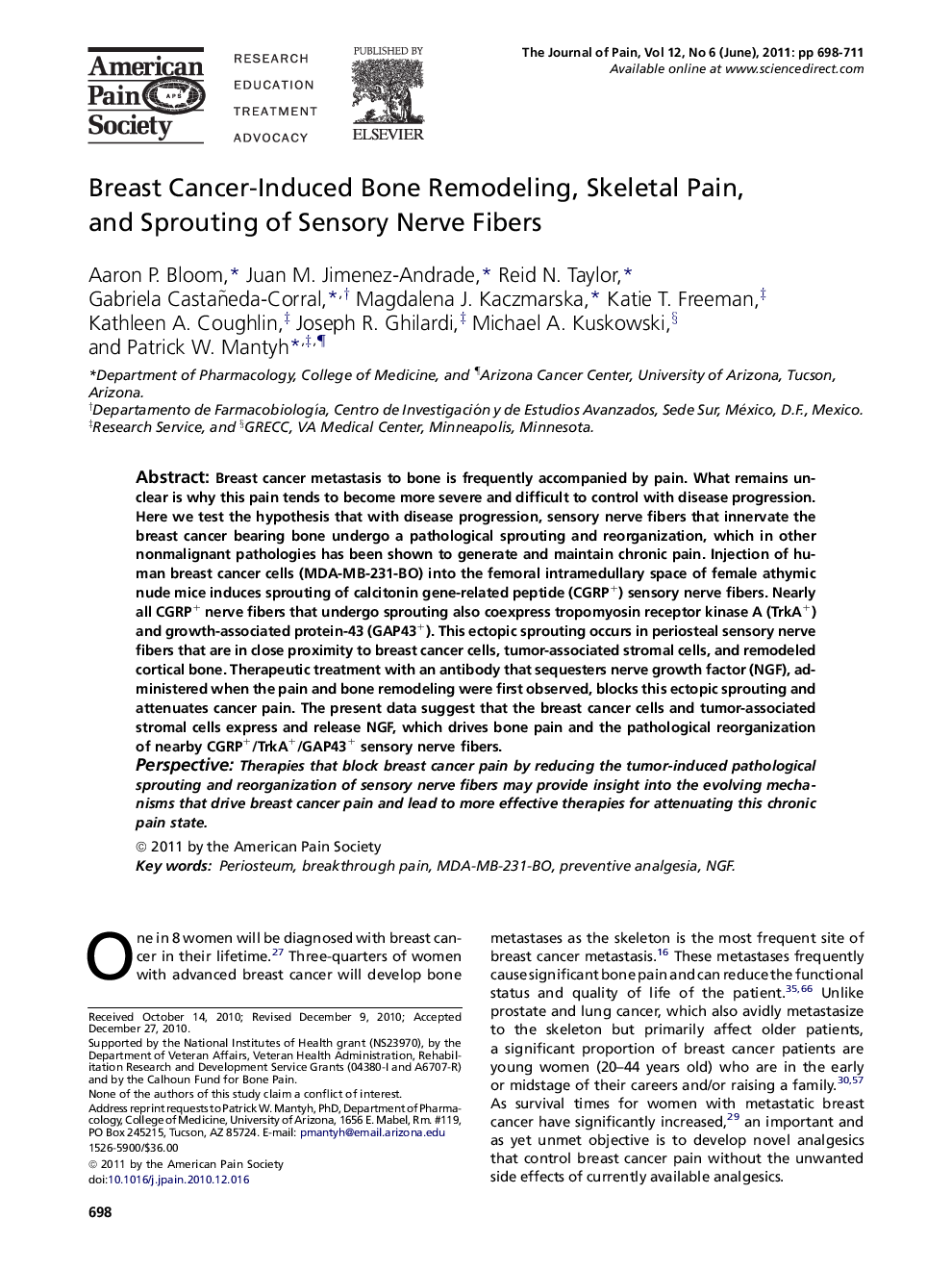| Article ID | Journal | Published Year | Pages | File Type |
|---|---|---|---|---|
| 2723226 | The Journal of Pain | 2011 | 14 Pages |
Breast cancer metastasis to bone is frequently accompanied by pain. What remains unclear is why this pain tends to become more severe and difficult to control with disease progression. Here we test the hypothesis that with disease progression, sensory nerve fibers that innervate the breast cancer bearing bone undergo a pathological sprouting and reorganization, which in other nonmalignant pathologies has been shown to generate and maintain chronic pain. Injection of human breast cancer cells (MDA-MB-231-BO) into the femoral intramedullary space of female athymic nude mice induces sprouting of calcitonin gene-related peptide (CGRP+) sensory nerve fibers. Nearly all CGRP+ nerve fibers that undergo sprouting also coexpress tropomyosin receptor kinase A (TrkA+) and growth-associated protein-43 (GAP43+). This ectopic sprouting occurs in periosteal sensory nerve fibers that are in close proximity to breast cancer cells, tumor-associated stromal cells, and remodeled cortical bone. Therapeutic treatment with an antibody that sequesters nerve growth factor (NGF), administered when the pain and bone remodeling were first observed, blocks this ectopic sprouting and attenuates cancer pain. The present data suggest that the breast cancer cells and tumor-associated stromal cells express and release NGF, which drives bone pain and the pathological reorganization of nearby CGRP+/TrkA+/GAP43+ sensory nerve fibers.PerspectiveTherapies that block breast cancer pain by reducing the tumor-induced pathological sprouting and reorganization of sensory nerve fibers may provide insight into the evolving mechanisms that drive breast cancer pain and lead to more effective therapies for attenuating this chronic pain state.
